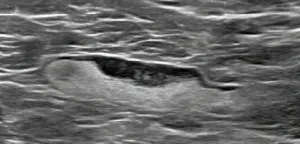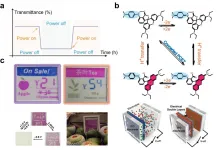(Press-News.org) Extreme weather driven by climate change is making power outages more commonplace even as the need for electricity-dependent home health equipment grows. In this context, battery storage can help protect medically vulnerable households, according to researchers at Columbia University Mailman School of Public Health. The article is published in the journal Futures.
For the millions reliant on electricity for home medical equipment, even short-term power outages can lead to a potentially life-threatening situation. Society's most vulnerable populations--elders, the ill, and the poor--face the greatest risks. Only a fraction of individuals who rely on medical equipment like oxygen concentrators, nebulizers, ventilators, dialysis, and sleep apnea machines has an alternative source of power to use in the event of an outage. During outages related to the 2019 Camp Fire in Northern California, vulnerable residents reported complications, including one man who awoke when his sleep apnea breathing machine failed in the middle of the night and he couldn't breathe. One woman had to spend the night in her wheelchair because her special mattress required electricity to remain inflated.
The researchers call for policies to support resilient power systems--ideally, battery storage paired with solar photovoltaics--that provide clean, reliable emergency backup power by storing electricity for use when grid power is unavailable. One model is the California Self-Generation Incentive Program, which provides incentives for residential battery storage, and includes energy storage incentives for low-income residents. Additional lessons come from a study in Puerto Rico after Hurricane Maria, which found that residents preferred solar-powered battery backups to diesel generators due to ease of use, low cost, and an elimination of fumes that exacerbate asthma and other lung conditions.
Community facilities like senior centers, public schools, and health centers often lack backup power, too. During an emergency, vulnerable residents typically turn to these facilities for heating/cooling, refrigeration to store perishable items and temperature-regulated medicines, lighting, and outlets to charge cell phones and medical equipment. Without backup power, critical facilities ultimately must limit operations or close entirely.
"Climate change coupled with an aging energy infrastructure is driving extreme weather-related power outages, as we've seen recently in Texas," says co-author Diana Hernández, PhD, associate professor of sociomedical sciences. "The technology to improve resiliency and energy independence exists, and it needs to be made more accessible to those who could most benefit. Battery storage units, particularly those powered by the sun, are a critical tool to help vulnerable individuals and communities survive the climate crisis."
In a separate review of scientific literature published in Current Environmental Health Reports, researchers found that power outages have important health consequences ranging from carbon monoxide poisoning, temperature-related illness, gastrointestinal illness, and mortality to cardiovascular, respiratory, and renal disease hospitalizations, especially for individuals relying on electricity-dependent medical equipment. Evidence from the U.S. suggests older adults, poorer families, and individuals of non-Hispanic Black and Hispanic race/ethnicity are least likely to have a three-day supply of food, drinking water, and medication, a preparedness measure for power outages.
Overall, the researchers found that more work is needed to better define and capture the relevant exposures and outcomes. "There is urgent need for data to inform disaster mitigation, preparedness, and response policies (and budgets) in an increasingly energy-reliant world," said first author Joan Casey, PhD, assistant professor of environmental health sciences at Columbia Mailman School.
INFORMATION:
Authors of the article on battery backup include corresponding author Marriele Mangoa, Clean Energy Group, Montpelier, VT; and Joan Casey and Diana Hernández at the Columbia Mailman School. The research was supported by the Robert Wood Johnson Foundation.
Authors of the literature review include Joan Casey, Mihoka Fukurai, and Diana Hernández at Columbia Mailman School; and Satchit Balsari and Mathew V. Kiang at Harvard TH Chan School of Public Health, Boston. The research was supported by National Institutes of Environmental Health Sciences grants (ES027023, ES009089) and the National Institute on Drug Abuse (DA051534).
Heads or tails? If we toss two coins into the air, the result of one coin toss has nothing to do with the result of the other. Coins are independent objects. In the world of quantum physics, things are different: quantum particles can be entangled, in which case they can no longer be regarded as independent individual objects, they can only be described as one joint system.
For years, it has been possible to produce entangled photons - pairs of light particles that move in completely different directions but still belong together. Spectacular results have been achieved, for example in the field of quantum teleportation or quantum cryptography. Now, a new method has been ...
Knowing the environmental and human-related variables that characterize the favorable areas for the incidence of the West Nile virus, a flavivirus that is transmitted from birds to humans by mosquitoes, is essential to identify those places in Europe at high risk of experiencing outbreaks, even before these are registered, thus enabling preventive measures to be taken.
Researchers of the Biogeography, Diversity and Conservation Group of the University of Malaga have developed risk models for West Nile Fever, the disease caused in humans by this virus, which, based on historical incidence data, may predict areas of future outbreaks a year in advance, as well as detect their intensity.
Artificial intelligence to develop risk ...
Leesburg, VA, February 24, 2021--An open-access article in ARRS' American Journal of Roentgenology (AJR) describes the clinical and imaging features of axillary adenopathy detected during screening or diagnostic breast imaging after recent coronavirus disease (COVID-19) vaccination to inform the development of follow-up recommendations.
Shabnam Mortazavi of the University of California at Los Angeles reviewed electronic medical records to identify women with post-COVID-19 vaccination adenopathy found from December 2020 to February 2021. For mammography, Mortazavi considered a node abnormal when its size, shape, or density was deemed disproportionate to other axillary nodes (ipsilateral or contralateral). On ultrasound, she deemed ...
With the voice commands "Alexa Skills," users can load numerous extra functions onto their Amazon voice assistant. However, these Skills can often have security gaps and data protection problems, as a team of researchers from the Horst Görtz Institute for IT Security at Ruhr-Universität Bochum (RUB) and North Carolina State University discovered, together with a former PhD student who started to work for Google during the project. They will present their work at the "Network and Distributed System Security Symposium (NDSS)" conference on 24 February 2021.
More than 90,000 Skills analyzed
In their study, the researchers ...
Torino, February 24, 2021 - The eukaryotic cell is the basic unit of animals and plants. At the microscope, it looks highly structured and subdivided in many membrane-bound compartments. Each compartment has a specific function, and its membrane is populated by specific molecules. How does the cell preserve this amazing internal order, and (in the absence of pathologies) does not degrade into a shapeless bunch of molecules? Such degradation is countered by a continuous process of molecule sorting by which similar molecules are collected and dispatched to the "right" destinations, similarly to what happens when a house is kept clean and ...
COVID-19, the disease caused by the pandemic coronavirus SARS-CoV-2, is primarily regarded as a respiratory infection. Yet the virus has also become known for affecting other parts of the body in ways not as well understood, sometimes with longer-term consequences, such as heart arrhythmia, fatigue and "brain fog."
Researchers at University of California San Diego School of Medicine are using stem cell-derived organoids -- small balls of human cells that look and act like mini-organs in a laboratory dish -- to study how the virus interacts with various organ systems and to develop therapies to block infection.
"We're finding that SARS-CoV-2 doesn't infect the entire body in the same way," said Tariq Rana, PhD, professor ...
If Affordable Care Act protections for pre-existing condition coverage are no longer available, the coronavirus pandemic would leave many Americans - a disproportionate number of whom are people of color - without health insurance, a new Oregon Health & Science University study indicates.
Published in the Journal of the American Board of Family Medicine, the study's findings reveal a third of the more than 7,500 COVID-19 patients who received care at U.S. community health centers between March and October 2020 did not have a pre-existing condition prior to contracting the novel ...
UCLA RESEARCH BRIEF
Enrique Rivero
FINDINGS
Older people correctly ascertained basic information such as dosage and duration of use for more than 70% of the medications they were prescribed, regardless of whether their physician explained it during an office visit. But when physicians failed to verbally provide information about potential side effects, people incorrectly assumed that about 55% of their prescribed medications had none. Even when physicians did discuss possible side effects, their patients incorrectly assumed there were no side effects for 22% of the medications.
BACKGROUND
There is a shortage of data about how well people understand basic information about the medications they are prescribed. This information ...
The development of low-energy-consumption and user-friendly electronic displays has become a long-term goal for future global sustainable development. Bistable electronic display, which requires very little electric drive to turn pages without consuming additional power to continuously display information/images, is one of the very good potential alternatives. Reflective display technologies with partial/complete bistable characteristics include e-ink, cholesteric liquid crystal, and electrochromic technologies, etc. They display information in light reflection mode, which can still be read under high-brightness outdoor sunlight and relatively dark indoor environments. It is also very friendly to the ...
The yellow fever mosquito (Aedes aegypti) is a main vector of deadly diseases like dengue fever, chikungunya, and the Zika virus, which result in hundreds of thousands of deaths worldwide each year. Because Ae. aegypti prefers to bite humans and there are no vaccines for many of these diseases they carry, developing methods to control these insects is imperative in the fight to control illness.
In a study recently published in Proceedings of the National Academy of Sciences, a Yale-led research team developed a new method to track how Ae. aegypti move through the environment. ...




